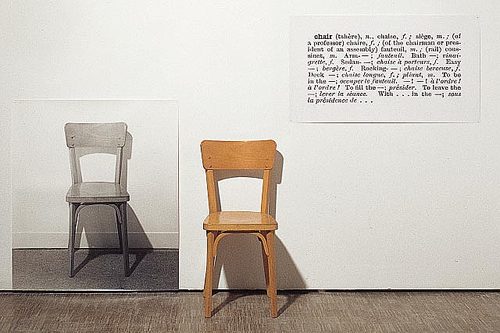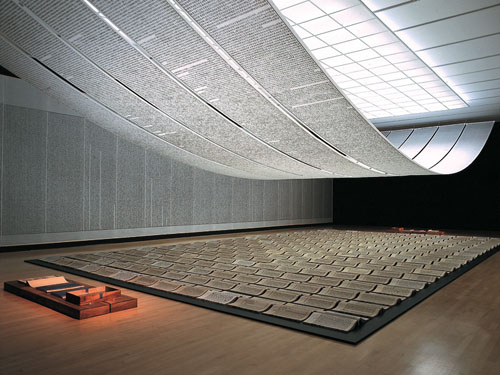by Zhang Chen
There is no doubt that nowadays conceptual art has become one of the main categories of contemporary art. This kind of art is far different from easel painting, the question is does it focus only on concept rather than on form?
As for whether or not contemporary conceptual art still has aesthetics, there have been two different point of views: one believes that conceptual art's resistance to visual sense, announces the demise of aesthetics, another argument insists that in the context of globalization, aesthetic in conceptual art is always there and will even play an increasingly important role. What is notable is that the meaning of "aesthetic”, is still the traditional sense of the aesthetic form which focuses on form, language, visual sense, unity and so on.

Andy Warhol's "Brillo Boxes"
The Anti-Aesthetic of Conceptual art?
In the 1960s, both abstract art and Greenberg's theoretical system came to a dead end obviously, as a variety of anti-modernist art was continuously emerging, such as Pop Art in the United States, "informal" or "amorphous" artists in Europe, then the "Fluxus" first emerged representing conceptual art thus the introduction of the beginnings of contemporary art. Momentous works such as: Joseph Kosuth's representative work "One and Three chairs", was an important figure in the conceptual art scene in the 1960s.

Joseph Kosuth's "One and Three Chairs"
In the 1980s, art theorists also issued the same comment. "The Anti-Aesthetic: Essays on Postmodern Culture" wrote by Hal Foster discussed the tendency of anti-aesthetic in artists' works.
"The End of Art" and "The Abuse of Beauty"
Scholar Danto who raised the famous theory of "the end of the art" believed that contemporary philosophy should take "beauty" out of art, in other words, it is not necessary for art to represent beauty, the quality of art may not be judged by "beautiful" or "inaesthetic", but by whether or not it can gain significance from self-reflection and by focusing on the contemporary.
The Return of Aesthetics?
The school of thought which supports that conceptual art has aesthetic qualities also include aestheticians, art historians and critics. Aesthetician Curtis Carter studied this matter in his book "Conceptual Art: Foundation of Global Art, or the End of Art?" He cited the example of Chinese concept artists, like Xu Bing's work, his "Book from the sky" which conveyed the thinking on contemporary social problems and at the same time did not forget the formal beauty of art. Then, combining the analysis of Chinese conceptual artists, Carter affirms that today with the increasing development of mass culture, the issue of aesthetics in contemporary art will play an increasingly important role. Other important books which maintain the similar view are: "Oxford History of Art: Beauty and Art 1750-2000", "Contemporary Art: A Very Short Introduction" and so on.

Xu Bing's "Book from the Sky"
Danto plus Xu Bing?
In my opinion, Danto's theory is more convincing; beyond the theory, the conceptual artists represented by Xu Bing have achieved a well-known success. This kind of success rests with the use of form which is an ingenious and appropriate combination along with concepts, the combination without being contrary to the artists' ideas adds a glamourous effect to works of art.. Even if the aesthetic does not return to art after the "end of art", form still remains necessary to take into consideration.
For global contemporary art, can conceptual art combine with formal beauty and become the new favorite of art from now on just as predicted by Contemporary Art and other books? It remains to be seen.
About the author

Zhang Chen/ CAFA ART INFO
Biography
Born in Shandong Province, China in 1987
Currently living and studying in Beijing
Education
2010
Graduated from the Art History Department of Humanities Institute, Central Academy of Fine Arts, Beijing;
Bachelor's thesis entitled “Formalism: from the open to close——Roger Fry's theory of formalism” won the second-class prize of Central Academy of Fine Arts' Excellent Graduation Thesis
Present:
A student of second-year master's degree in the Art History Department of Humanities Institute, Central Academy of Fine Arts, Beijing
Advisor: Shao Yiyang, Adjunct Professor of the Central Academy of Fine Arts
Research Area: Visual Culture
Email:houyizc@sina.com
The views expressed in this column are the author’s own and do not represent those of CAFA ART INFO.




























